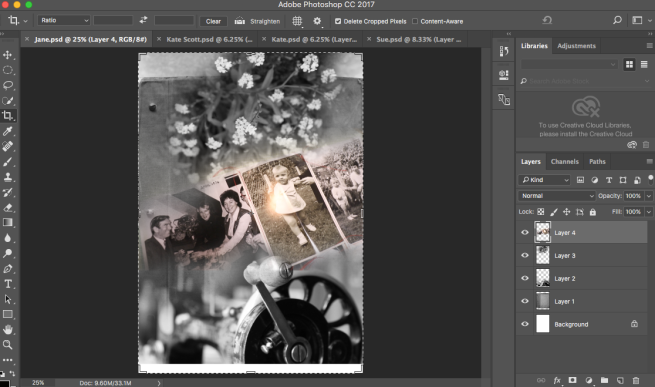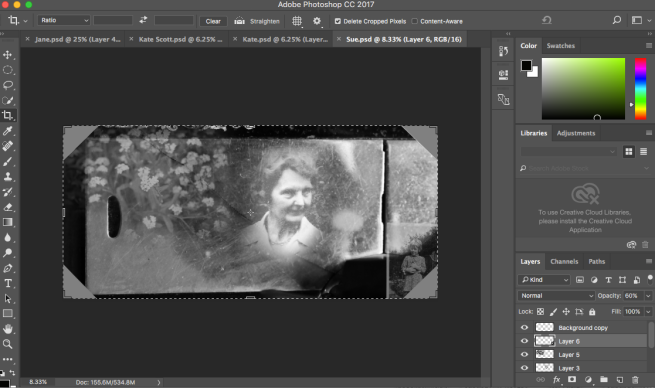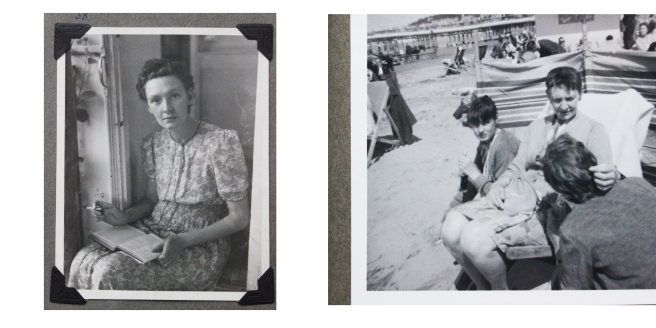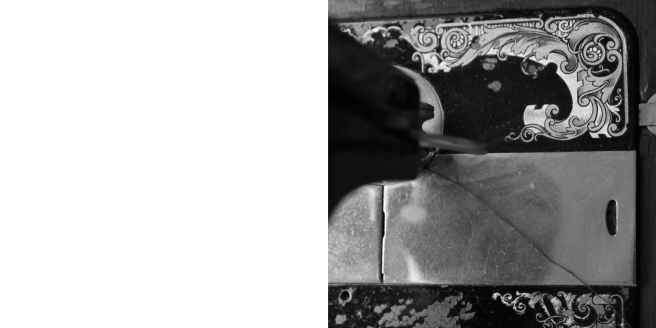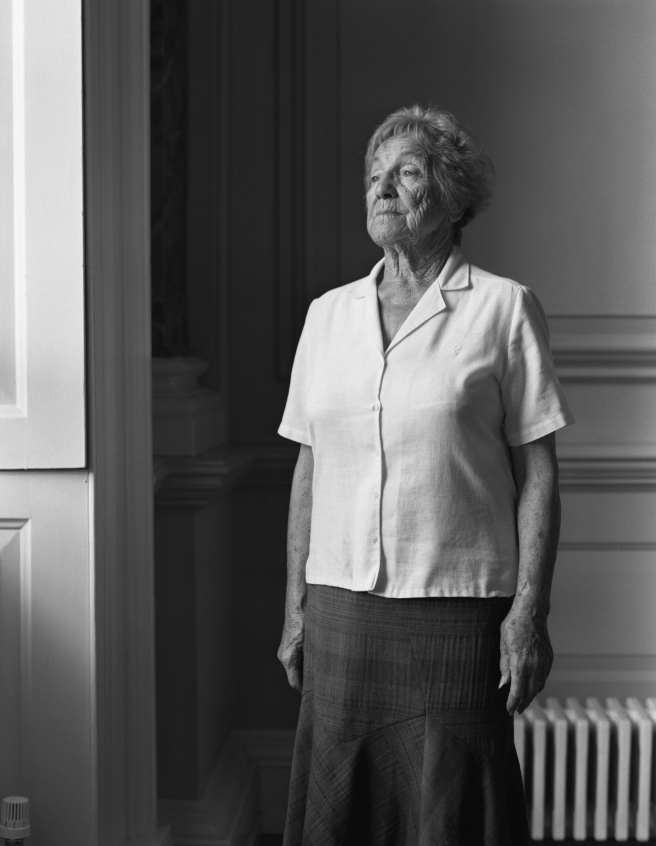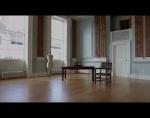A report to examine the current contemporary position of a potential participatory action research project that will inform the use of photographic imagery for explorations of memory and transmitted memories to overcome emotional trauma and loss. The project will involve aspects of participatory art; specifically, creative narrative-based activities, image capture and performance.
Participatory action research is a current and very relevant process of enquiry conducted by and for participants of the project. Photography has established itself as important tool for activities facilitating and aiding to self-advocacy. I am interested in gathering research which will support my work on post-memory and inform my understanding of the potential of art/photo-therapy to support positive mental health and wellbeing. In order to do this, I will be considering work which has been previously published, I will look at national and local creative support networks, access current information on socially engaged practice, establish a sound research strategy with consideration to ethical issues and look to the possibilities for funding.
From the discussions in the 70’s raised by Susan Sontag in her work ‘On Photography’(1977) of the power of photography in shaping society and Barthes’ photographic inquiry’s in ‘Camera Lucida’ (1980), we have come to understand the significance to personal and social histories of the photographic image. The position of self within personal relationships, within family and in society is often understood within of the conventions of the photographic image. Annette Kuhn, professor in Film Studies at Queen Mary University of London, has provided the work, ‘Family Secrets: Acts of Memory and Imagination’, which is an excellent example of the concerns of visual communication, cultural and personal histories. This work is very poignant for the research into childhood memories and is preceded by the influential research on this matter by Marianne Hirsch. In her work ‘Family Frames’, (1997) Hirsch, a leading academic in the research of memories and the transmission of memory writes about the important considerations of photographic representation and the construction of family relationships. Hirsch looks at how photographs can have the duality to represent for us a sense of cultural social security, and at the same time mask social failure and dysfunctions.
Such important questions of the relationship between photography and memory, yet there is another important consideration to make which David Bate raised in his paper ‘The Memory of Photography’ (2010); the manner and capacity one has to remember and recall. Bates asks us to consider this quote from Sigmund Freud:
‘If I distrust my memory – neurotics, as we know, do so to a remarkable extent, but normal people have every reason for doing so as well – I am able to supplement and guarantee its working by making a note in writing. In that case the surface upon which this note is preserved, the pocket-book or sheet of paper, is as it were a materialized portion of my mnemic apparatus, which I otherwise carry about with me invisibly. I have only to bear in mind the place where this “memory” has been deposited and I can then “reproduce” it at any time I like, with the certainty that it will have remained unaltered and so have escaped the possible distortions to which it might have been subjected in my actual memory. (“The ‘Mystic Writing-pad’” 429)
And yet with all the acknowledgements of false and changing interpretations of images of the past we are certain of the place of photography and as an “aide-memoire”, a tool to explore and extract ideas and beliefs from our subconscious minds. To explore the use of photography in this way; a process more aligned to a psychotherapy is not new. Photo-Therapy was a term coined by Jo Spence in her work with Rosy Martin on the relationship of photography and subject. Adopting techniques from co-counselling, the subject was able to act out narrative and claim ownership of their own representation. Many current collaborative projects using photography to promote self-advocacy have their legacy with the work of Spence and Martin.
PhotoVoice is a current charity that has been set up to work in conjunction with national and international community-based organisations to promote the use of participation photography in the use of storytelling and promotion of self-advocacy to socially excluded groups. Their mission statement reads, ‘to promote the ethical use of photography for positive social change, through delivering innovative participatory photography projects’. Their vision ‘is for a world in which everybody has the opportunity to represent themselves and tell their own story’.
A significant case study for an action research project; In 2015 PhotoVoice worked with Corma a UK based charity set up to support Vulnerable and young people. This Project was in conjunction with the ‘Adoptables’ organisation which helps to facilitate understanding and expression of experience for young people affected by adoption. As with all PhotoVoice projects there is considerable emphasis on advocacy. Digital workshops for 15 yr olds with adoption experience were held providing them with the tools and skills to explore and share their experiences in relation to the adoption and support network. The work produced from these participation workshops gave information and was insightful to professionals as to how to better support young people through the adoption process and the activity itself was empowering for the young people that participated. An exhibition of captioned images was produced from the images produced, which highlighted issues around adoption, informing many of the agencies that are involved in the process.
Locally, Art Shape are a charity established in 1993 that run countywide art programmes with a focus on disability and social inclusion. Art shape are a founding member of Create Gloucestershire, a ‘collaborative laboratory for change’. Create Gloucestershire offer a platform for organisations and individuals to develop arts strategies for and by practitioners. Research, ideas and thinking are encouraged by Create Gloucestershire to promote arts in Gloucestershire by the network of artists, organisations and strategic partner across different sectors. Typical opportunities for participation by the vast network of members are the current ‘Photography with Mindfulness’ workshops’ run by Ruth Davey as part of her ‘Look Again’ projects. ‘Look Again’ promotes the use of photography and mindfulness as tools to see life and the world differently. Ruth Davey collaborates with, health practitioners and specialist coaches.
Access to relevant current and contemporary professional development opportunities and networking for collaboration are presented at festivals and symposiums. An important up and coming event to attend this June in Plymouth is ‘Social Making: Socially Engaged Practice Now and Next’. Access to such events allows for the exposure ot he most current debates and expertise. Feeling Images: Photography’s Relationship with Illness, Mental Health and Wellbeing Symposium, was one such recent event with specific relevance. Patrick Graham talked about using photography to explore his relationship with his estranged father and coming to terms with his sense of self. Sian Davey spoke about her photographic practice in relation to photography, health and wellbeing, and how it was informed by her background as a trained Psychotherapist. And Rosey Martin, discussed her re-enactment photography through the aforementioned landmark collaboration with Jo Spence.
Participatory action research requires strategy and ultimately funding. National funding; Arts Council England invest public money via grants and bursaries. Arts Council England also support other agencies that offer funding. A-N, the artist information company provide bursaries for research, Nesta support a small number of ideas that meet their aims, through grant funding, direct investment or challenge prizes. Currently Nesta offer a ‘Good Help Award’, an award for organisations or individuals that demonstrate they are helping people transform their lives by helping them develop their sense of purpose and confidence to take action. Visual Arts South West is typical in its regional approach to supporting arts initiatives, as well as offering valuable information to support access funding. Last month VASW organised a fundraising work shop; ‘Arts Fundraising & Philanthropy for small organisations & artists’. This was an insightful event presented by Amanda Rigali from Arts Fundraising and Philanthropy at Spike Island, Bristol.
As with funding applications, research projects need strategy. In the early 1990’s Caroline Wang and Mary Ann Burris created the action research strategy; Photovoice methodology. Over the last 20 years it has become increasingly used in photographic participatory project design namely in the fields of education, public health, disability and mental health. Using ‘ethnographic techniques that combine photography, critical dialogue, and experiential knowledge, participants reflect on and communicate their communities’ concerns to represent their culture to expose social problems and to ignite social change’ (Burris, M., and C. Wang. 1997)
Ethical issues will arise as part of participatory work, particularly within the field of photography and image making particularly the resulting imagery may be used publicly. There are a range of issues that will potentially arise with different projects. If these issues are not given consideration, before and during the project, there is the potential for the project to do more harm than good to the participants. It will be imperative to make an assessment of risk, establishing ground rules, giving participant choices, operating with caution, (particularly around emotional and mental health) ensuring confidentiality, and anonymity where appropriate.
Participation and collaboration are the key elements to the research project, having suitable participants, expert support, appropriate space and extra personal to facilitate will be vital to a successful outcome. Information about the project and appropriate promotion can ensure the most appropriate individuals are selected for participation and supporting roles Promotion may take the form of a precursor event, exhibition of previous work, ideas in progress, discussion groups and guess talks. Warwickshire Open Studios is an organisation helping visual artists across the Warwickshire area connect with art-lovers who enjoy, buy, commission and participate in their work. As a member exhibitioner, show casing my proposed research project, with current work in progress at this summer’s open studio event in June will be an ideal opportunity to enlist interested participants.
Bibliography
Burris, M., and C. Wang. 1997. “Application of Photovoice to Participatory Needs Assessment.” Health Education & Behaviour 24: 369–387
Freud, Sigmund. 1984. “The ‘Mystic Writing-pad.’”. In On Metapsychology: The Theory of Psychoanalysis, Edited by: Freud, Pelican. Vol. 11, 427–433. Harmondsworth: Penguin. 1925
Hirsch, Marianne (1997) Family Frames, Harvard University Press: Cambridge,Massachusetts and London England.
King. N. (2000) Memory, Narrative, Identity: Remembering the Self (Tendencies: Identities, Texts, Cultures) Edinburgh University Press, Edinburgh UK
Kuhn, Annette (2002) Family Secrets: Acts of Memory and Imagination, Verso: London,England
https://www.creategloucestershire.co.uk
https://artshape.co.uk
https://photovoice.org
https://www.warwickshireopenstudios.org















